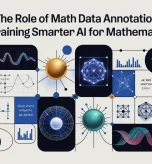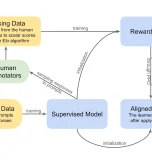Throughout this series, we’ve explored the building blocks of agentic AI – tools, RAG, planning, memory, coordination patterns, and decision-making frameworks. But there’s always a gap between understanding concepts and seeing how they work in the real world.
Today, we’re closing that gap by examining actual agentic systems that millions of people use every day. While we can’t peek inside their proprietary code, we can analyze how they behave and make educated assessments about how the principles we’ve discussed manifest in production systems.
These aren’t academic experiments or proof-of-concept demos. These are commercial products handling real user demands at scale, which means they’ve had to solve the practical challenges of making agentic AI actually work.
NotebookLM: Your Personal Research Assistant
Google’s NotebookLM represents one of the most polished examples of agentic RAG in action. On the surface, it appears to be a simple document Q&A system – you upload files, ask questions, and get answers. But underneath, it demonstrates sophisticated agentic behavior.
How It Likely Works:
When you upload documents, NotebookLM doesn’t just store them – it processes and indexes them for intelligent retrieval. This preprocessing likely involves chunking documents strategically, creating embeddings, and building retrieval pathways that enable fast, contextual search.
The real magic happens when you ask questions. The system needs to:
- Interpret your intent: Is this a factual question, a request for summary, or a comparison across documents?
- Plan its approach: Which documents or sections are most relevant? What type of response format would be most helpful?
- Execute retrieval: Search across your content intelligently, not just for keyword matches but for conceptual relevance
- Synthesize responses: Combine information from multiple sources into coherent, grounded answers
Agentic Elements:
- Tools: Document parsing, retrieval systems, summarization modules
- Planning: Implicit task decomposition based on query type and available content
- Memory: Maintains conversation context and can reference previous exchanges
- RAG: Sophisticated retrieval that goes beyond simple keyword matching
Agent Classification: NotebookLM sits between Level 2 (Workflow Agent) and Level 3 (Semi-Autonomous Agent). You maintain control over the conversation flow, but the system makes intelligent decisions about how to search, synthesize, and present information.
Perplexity: Rethinking Web Search
Perplexity has fundamentally reimagined how we interact with web information. Instead of returning a list of links like traditional search engines, it provides direct, synthesized answers with source citations – essentially acting as a research assistant that can think through complex queries.
The Agentic Workflow:
When you ask Perplexity a question, it initiates a multi-step reasoning process:
- Query interpretation: Understanding not just what you asked, but what kind of answer would be most valuable
- Search strategy: Determining which sources to consult and what search terms to use
- Information gathering: Making multiple search queries, potentially iterating based on initial results
- Source evaluation: Assessing credibility and relevance of found information
- Synthesis: Combining information from multiple sources into a coherent response
- Citation: Providing transparent source attribution
Recent Evolution with Comet: Perplexity’s new Comet browser takes this further into true agentic territory. It can:
- Navigate websites and interact with web forms
- Automate multi-step tasks like booking appointments or ordering food
- Create reusable workflows for repetitive tasks
- Manage cross-application processes through API connections
Agent Classification: Traditional Perplexity operates as a strong Level 3 (Semi-Autonomous Agent). Comet pushes into Level 4 (Autonomous Agent) territory, where you can delegate complex tasks and trust the system to complete them independently.
DeepResearch: Complex Analysis at Scale
OpenAI’s DeepResearch represents perhaps the most sophisticated publicly available agentic system for complex research tasks. It’s designed to handle open-ended questions that require extensive investigation and synthesis.
The Agentic Process:
When you request analysis like “Evaluate the competitive landscape for AI-powered educational tools,” DeepResearch likely:
- Decomposes the task: Breaking broad questions into specific research areas (market size, key players, technology trends, regulatory factors, etc.)
- Creates execution plans: Determining the sequence of research activities and information gathering strategies
- Executes iteratively: Conducting searches, analyzing results, identifying knowledge gaps, and conducting additional research
- Maintains context: Keeping track of findings across multiple research threads and connecting insights
- Synthesizes comprehensively: Creating coherent reports that draw from numerous sources and present actionable insights
Advanced Capabilities:
- Multi-modal research: Working with text, images, charts, and other content types
- Cross-source validation: Checking facts across multiple sources and identifying discrepancies
- Adaptive planning: Adjusting research strategies based on what’s discovered during the process
- Report generation: Creating structured, professional-grade deliverables
Agent Classification: DeepResearch is clearly a Level 4 (Autonomous Agent). You provide a high-level objective, and it independently determines how to achieve it, adapting its approach as needed.
ChatGPT Agent: The Latest Evolution
OpenAI’s recently launched ChatGPT Agent (mid-2025) represents a significant leap in agentic capabilities, particularly in web interaction and task automation.
Key Capabilities:
- Web browsing and interaction: Can navigate websites, click buttons, fill forms, and complete multi-step online tasks
- Task automation: Planning and executing complex sequences like event planning, data extraction, or competitive research
- Integration capabilities: Connecting to external services through APIs and handling cross-platform workflows
- Safety and control: Implementing sophisticated permission systems and user oversight for sensitive operations
The Agentic Architecture: The system appears to implement sophisticated planning and execution loops:
- Task decomposition: Breaking complex requests into manageable subtasks
- Tool orchestration: Selecting and coordinating multiple tools (web browser, APIs, file handlers, etc.)
- Error handling: Adapting when things don’t go as planned
- User interaction: Knowing when to ask for clarification or permission
Agent Classification: This is firmly Level 4 (Autonomous Agent) territory, with sophisticated safeguards and user controls.
What These Systems Teach Us
Examining these real-world implementations reveals several important patterns:
- Progressive Complexity: Each system demonstrates different levels of agentic sophistication, from NotebookLM’s controlled RAG interactions to ChatGPT Agent’s autonomous web navigation. This shows there’s no one-size-fits-all approach to agentic design.
- User Control Balance: All successful systems implement thoughtful approaches to user control. Even highly autonomous systems like DeepResearch and ChatGPT Agent provide transparency, checkpoints, and override capabilities.
- Specialized vs. General Purpose: NotebookLM excels within its specific domain (document analysis), while ChatGPT Agent aims for broader task automation. Both approaches can be successful when matched to user needs.
- Safety and Trust: Every system implements safeguards – whether it’s NotebookLM’s grounded responses, Perplexity’s source citations, or ChatGPT Agent’s permission systems. Trust is essential for user adoption.
The Implementation Reality
These systems also illustrate the practical challenges we’ve discussed throughout this series:
- Complexity Management: Each system has likely required significant engineering effort to handle edge cases, manage state, and provide reliable performance. The polished user experience masks substantial technical complexity.
- Cost and Performance Trade-offs: These systems balance sophisticated capabilities with response time and computational cost. Not every query needs the full power of autonomous planning.
- User Experience Design: Success requires more than just technical capability – it requires intuitive interfaces that help users understand what the system can do and how to use it effectively.
Implications for Enterprise Implementation
These consumer-facing systems provide valuable insights for organizations building their own agentic AI implementations:
- Start with Clear Use Cases: Each successful system addresses specific, well-defined user needs rather than trying to be everything to everyone.
- Design for Trust: Transparency, explainability, and user control aren’t optional features – they’re essential for adoption and sustained use.
- Plan for Scale: These systems handle millions of users with varying needs and expectations. Robust architecture and careful performance optimization are critical.
- Iterate Based on Real Usage: The sophistication of these systems reflects extensive learning from user behavior and feedback.
The Competitive Landscape
The rapid evolution of these systems also illustrates the competitive dynamics in agentic AI:
- Differentiation Through Specialization: NotebookLM focuses on document analysis, Perplexity on research, ChatGPT Agent on task automation. Each finds its niche rather than trying to do everything.
- Feature Arms Race: Capabilities that seemed revolutionary months ago quickly become table stakes as competitors match and exceed them.
- Integration vs. Platform Strategies: Some systems integrate deeply with existing platforms, while others aim to become platforms themselves.
Key Implementation Lessons to Keep in Mind
As you consider your own agentic AI implementations, these real-world examples provide several key insights:
- Match Complexity to Need: NotebookLM’s controlled approach works for its use case, while ChatGPT Agent’s autonomous capabilities serve different needs. Choose the right level of sophistication for your specific problems.
- Invest in User Experience: Technical capability means nothing without interfaces that help users understand and effectively use agentic features.
- Plan for Trust and Safety: Every successful system implements sophisticated approaches to user control, transparency, and error handling.
- Consider Integration Strategy: Whether you build standalone systems or integrate with existing workflows significantly impacts user adoption and value realization.
Moving from Theory to Practice
Understanding how successful agentic systems work in practice provides valuable context for your own implementation decisions. The gap between understanding concepts and building production systems is significant, but these examples show it’s definitely achievable.
The key is matching your implementation approach to your specific use cases, user needs, and organizational constraints – just as these successful systems have done.
Whether you’re planning your first agentic AI implementation or looking to enhance existing capabilities, examining how others have successfully bridged the theory-to-practice gap can inform your strategy. Contact us to explore how the patterns and principles demonstrated by these real-world systems might apply to your specific challenges and opportunities.
Sometimes the most valuable insights come not from understanding what’s theoretically possible, but from seeing what actually works in practice with real users and real constraints.






